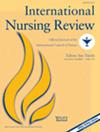Ambulance Nurses’ Experience of a Simulation Exercise Concerning Intimate Partner Violence
Abstract
Aim
To qualitatively assess an intervention for ambulance nurses, including simulation training concerning intimate partner violence (IPV), and to describe the ambulance nurses’ experiences of their work after the intervention.
Background
IPV is a common public health issue with serious consequences from individual and societal perspectives. Previous research indicates that deficits in knowledge, preparedness, confidence, and clinical skills are barriers for nurses in detecting IPV. Ambulance nurses have a unique opportunity to identify IPV as they often encounter patients in their homes. However, there is limited research on the impact of simulation for training ambulance nurses to improve their preparedness and competence to respond to IPV.
Design
An intervention study using qualitative semi-structured interviews that were analysed using content analysis.
Method
Simulation pedagogy was used for training ambulance nurses (n = 7) in how to deal with women suspected of having been exposed to IPV. Qualitative interviews were conducted to collect data about the ambulance nurses’ experiences with the simulation and about their work in relation to IPV after the simulation. The interviews were analysed using content analysis.
Results
The results are presented through four categories and eight subcategories. The categories are: Simulation provided new insights, Simulation was like encountering a real patient, Simulation changed my way of working, and Simulation increased awareness of the importance of teamwork.
Conclusion
The participants experienced increased confidence in asking about exposure to violence, resulting in more patients being asked about exposure to IPV after the simulation training. Although this was a small study, the results showed the importance of training in a realistic context and the value of interaction among participating ambulance nurses. Simulation addressing IPV can open new doors by providing new knowledge and by allowing participants to observe each other.
Implications for Nursing Practice
The findings from this study might also be applicable to nurses in other contexts, such as district nurses or nurses in home-based care work. Training with simulations can increase knowledge about IPV and provide practical strategies for how, when, and where to address the issue of IPV. This can lead to a higher likelihood of identifying and providing support to individuals experiencing IPV.


 求助内容:
求助内容: 应助结果提醒方式:
应助结果提醒方式:


